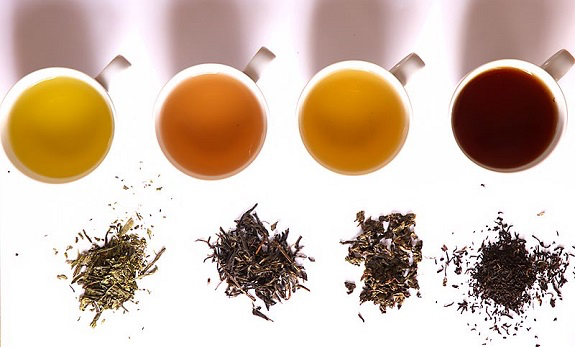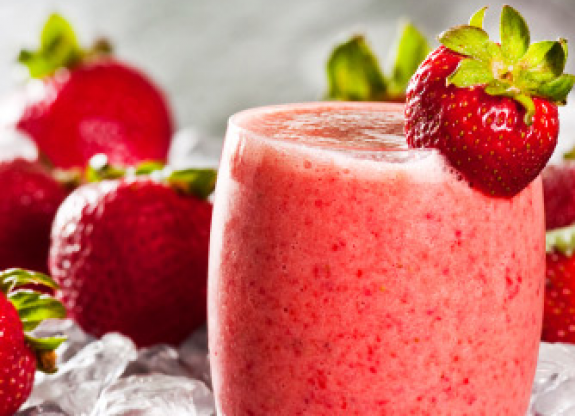Supplement Manufacturers Sued and Arrested for False Claims
- At December 27, 2015
- By Katherine
- In Articles, News
 0
0

The United States Department of Justice brings criminal charges against popular supplement manufacturers
There are a LOT of dietary supplements on the market. They all make lots of claims about what they can do for your body and health – many in particular tend to trumpet their ingredients, especially if they’re “all natural.”
Well, the Department of Justice thinks we can’t trust what the supplements tell us. DOJ brought civil and criminal actions against 117 – yes, you read that correctly, 117 – individuals and entities. Of those, 89 have so far been the subject of cases.
Some are accused of mislabeling because the product has ingredients not listed on the label. Others are charged with making claims about what the supplement can do without adequate supporting scientific evidence. An Assistant Attorney with DOJ said they brought these actions “so consumers know the serious health risks of untested products.”
One particularly bad case is USPlabs LLC, which made both workout and weight loss supplements. DOJ alleges that USPlabs used synthetic stimulants instead of natural plant extracts that they advertised. Further, USPlabs is charged with knowing that one supplement, OxyElite Pro, might cause liver toxicity and secretly selling OxyElite despite telling the FDA it would stop. Because of this, 6 employees have been arrested, and company assets have been seized.
You can read more information about UPSlabs and other companies in their press release. But use this as a warning, and be careful what supplements you buy! You should always do your research on supplements before you add them to your routine – talk to a health professional if you can! At the very least, though, be glad that someone is working toward your best interest.
New Studies on Cocoa: Reduces Wrinkles and Protects Against Alzheimer’s Disease
- At November 29, 2015
- By Katherine
- In Articles, News
 0
0
For most people, chocolate is a delicious treat to enjoy in moderation. Some new scientific work, though, may give you an excuse to treat yourself more often.
The first, a study published in the Journal of Nutrition, examined the effects of cocoa on the moderately sun damaged skin of women aged 43 to 86. The participants drank flavanol-enhanced cocoa drinks, containing 320 mg flavanols** daily, over 24 weeks. It’s been established in previous studies that flavanols in cocoa – and other foods – help maintain a healthy vascular system, relax blood vessels (lowering blood pressure), reduce blood clotting – an aspirin-like affect –reduce oxidative damage, and improve blood flow. This new study found that women who drank the flavanol – fortified cocoa drink (containing the equivalent of about 4 tablespoons of cocoa daily**) experienced reduced wrinkles and increased skin elasticity, thereby reducing the effects of sun damage and aging – probably due mostly to their antioxidant and anti-inflammatory properties.
Cocoa flavanols may impact brain aging, too, according to a recent Journal of Alzheimer’s Disease review. Previous research has shown that flavanols contribute to healthy brain aging and cognitive decline prevention by improving blood flow to the brain and reducing the oxidative and inflammatory damage which occurs with aging. But cocoa harvesting and production produces highly variable levels of flavanols in cocoa products. So scientists are looking for more consistent methods for developing cocoa flavanol formulas containing higher levels of flavanols. “The ultimate goal of this review is to provide recommendations for future developments of cocoa extracts as a therapeutic agent in AD [Alzheimer’s Disease].”
These results could mean big things down the line for brain and skin health! Meanwhile, keep in mind that flavanols are also found in tea, wine and many fruits and vegetables. Also, nutrition studies tend to use concentrated forms of nutrients so the effects are more measurable and significant. Conclusion: eat a plant-based diet!
Read more extensive information on cocoa and its health benefits…
Katherine’s Chocolate for Health Tips:
If you’re eating chocolate for health benefits, you’ll need to be very discriminating in your selections.
You’ll get more flavanols, and therefore health benefits, with less processing. The first choice is cocoa, which isn’t Dutch processed – as when cocoa is “Dutch processed with alkali” the flavanols are reduced. Look for chocolate which has the highest percentage of cocoa as possible and to save calories, look for chocolate with lower fat and sugar levels. In general, cocoa is your best first choice. Second choice is a semisweet or bittersweet chocolate with a high cocoa percentage. Some chocolates go as high as 85% cocoa, but legally can be as low as 35%. I recommend no more than an ounce a day, which may be about 110 – 150 calories, depending on the chocolate. Any more than that and you’re probably going to take in too many calories for weight control
**The numbers:
Type of Chocolate Mg Flavonols Calories
1.3 oz Dark Chocolate Bars, Average*: 82 mg 187
1.3 oz Milk Chocolate Bars, Average*: 42 mg 198
1 TBSP Unsweetened Cocoa Powder, Average*: 75 mg 12
*USDA’s Nutrient Data Laboratory
Tea Has Amazing Health Benefits – Green or Black Tea
- At November 20, 2015
- By Katherine
- In Articles, News
 0
0
Need an excuse to break for afternoon tea at work? A new study found green or black tea, in a very concentrated form, can improve your overall health in many different ways.
As I wrote in my Washington Post article, tea has long been known for its antioxidant and anti-inflammatory properties. So researches decided to extract one of the most active compounds in tea to see what would happen. The extract, called “AssuriTEA,” was given to subjects in different doses. They found all doses had benefits, but most of the benefits were experienced in the subjects with the largest dose. After taking the extract for 28 days, the subjects showed improved antioxidant levels (which protects you from almost all diseases), lower blood glucose levels, and increased energy. They also found lower systolic blood pressure at both dosages and lower diastolic blood pressure at the higher dosage.
Even though we don’t have access to this extract; no matter; I recommend using “whole” tea leaves anyway: The whole food is always better! Studies use concentrated forms of foods so they can more easily measure results. This study, published recently in the journal “Functional Foods in Health and Disease,” confirms the health benefits of tea are impressive – I know what I’m doing at 3 o’clock today! You?
Short Bouts of High Intensity Exercise may be as Effective – or Better Than – Walking
- At November 19, 2015
- By Katherine
- In Articles, News
 0
0
For people with Type 2 Diabetes or anyone trying to lose weight, we all know physical activity is a key part of health management. Walking (low – to – medium intensity exercise) is effective, but takes time to get your 10,000 daily pedometer steps.
So what I’m about to tell you may be good news if you have limited time: A new study, recently published in the journal, Circulation, shows there may be an alternate and effective way to lose weight, lower blood pressure, glucose, and cholesterol. People were divided into two groups; one group did 30 minutes of exercise, five days a week at 65% of their target heart rate, while the other did 10 minutes of exercise, three times a day, 5 days a week at 85% of target heart rate. Those who were assigned to the high intensity group ended up exercising more. They also showed larger improvements in glucose levels, lipid profiles (cholesterol), body weight, and cardiovascular fitness as compared to the lower intensity group.
Were the improvements due to the intensity of the exercise or the fact that the high intensity group ended up exercising more? No matter. This study, and others I’ve seen, show short bursts of high intensity exercise will get the results you need to manage your health, so I recommend it to anyone with limited time, and with the ability to exercise intensely.
But if you have even less time, you may not even have to do 10 minutes.
Researchers at the University of Copenhagen in Denmark found ten seconds works! Their study found that a full ten minutes of high intensity exercise may not be necessary and that most people can’t tolerate that amount of intensity. The Danish study found four 10 second bouts of intense exercise may do the trick. The researchers came up with a formula they called 10-20-30: Start with 30 seconds of regular intensity exercise (bike or walking, etc), increase to 20 seconds of medium intensity, then accelerate to 10 seconds of high intensity exercise, and repeat 4 times. And while their subjects were only exercising for 12 minutes they were achieving significant health results, such as lower blood pressures.
That said, my experience with hundreds of clients over the years, proves walking works! You can lose body fat, lower blood pressure, glucose, and cholesterol by walking – not to mention improve thinking and memory, increase energy levels and self-esteem, reduce arthritis pain, and even improve gastrointestinal health. But, if you don’t have the time or the patience for long stretches of walking, don’t worry, as it seems there are other ways to get results! Bump up your exercise intensity for shorter periods of time through the day.
Bottom line: Just move! If walking is your preferred way, that will get you the results you want. But these studies show short bursts of high intensity exercise may also gets results, and perhaps even better results.
For me: I’ll stick with walking to keep my knees and back happy. Though, occasionally, I’ve included four 10-20-30 intervals while getting my 10,000 daily pedometer steps. It seems to improve my endurance, especially when I drink my cafe latte before exercise!
Strong Legs are Linked to a Stronger Brain
- At November 17, 2015
- By Katherine
- In Articles, News
 0
0
Want to make sure your mind stays sharp later in life? Strengthen your legs to strengthen – even increase – your brain.
Everyone wonders what they can do to stay of sound mind as we age. Well, now we may have a strategy: get strong gams!
Researchers studied twins over a period of 10 years. What they found was promising. Those who had increased leg power at the start of the study showed improved cognitive aging after the 10 years. They also found those with stronger legs had larger gray matter volume.
Because of these findings, published recently (November 10th) in the journal Gerontology, researchers intend to do bigger and longer studies. They even plan to look at how other areas of strength might correlate with improved cognition. While they do that, I’m going to do more squats and lunges…after I take a nice, long walk to make sure I can do crosswords for a long time!
Trying to Lose Weight? Skip the Diet Soda and Go To The Tap!
- At November 13, 2015
- By Katherine
- In Articles, News
 0
0
People trying to lose weight look for any way to cut calories. We tend to consume a lot of calories in liquid form, so people often think diet beverages are a great way to help them lose weight. But researchers have a better (and cheaper!) solution: good old fashioned water.
In a recent American Journal of Clinical Nutrition study, participants on a weight-loss plan were asked to cut out diet drinks in favor of water after lunch over 24 weeks. Compared to those who stuck with diet soda, those who drank H2O saw greater weight loss and better insulin resistance.
Water is cheaper than diet beverages and is great for digestion. So if you’re looking to improve your health and slim down, skip the can and head for the tap! Your stomach will thank you.
Reason? This study I’ve written about shows artificial sweeteners may reduce your ability to burn body fat, but there may be other reasons, too…
Your Weight Affects Arthritis Flare-Ups and Remissions
- At November 11, 2015
- By Katherine
- In Articles, News
 0
0

Your size affects whether rheumatoid arthritis, a painful and debilitating form of arthritis, flares up or goes into remission. A recent study looked at whether Body Mass Index (BMI) – your weight – had any relationship with rates of long-tern remission of early rheumatoid arthritis (ERA). They looked at patients in the normal (BMI 18.5-24.9), overweight (25-29.9), and obese (≥30) ranges.
Results showed that rheumatoid arthritis sufferers who are at healthy weights were able to stay in remission longer than people in the overweight and obese ranges, who were less likely to achieve long-term remission.
What does that all mean? Your body weight (BMI) isn’t the final word in health, but it shows that weight control and management might play a part in rheumatoid arthritis treatment.
A Gluten-Free Reality Check
- At August 17, 2015
- By Katherine
- In Articles, News
 0
0
 A whopping 21 percent of Americans are currently making an active attempt to eat gluten-free, according to a Gallup poll published July 23. That dwarfs the 1 percent of the U.S. population diagnosed with celiac disease, the only medical condition that requires gluten-free products for someone with the disease to live a healthy life.
A whopping 21 percent of Americans are currently making an active attempt to eat gluten-free, according to a Gallup poll published July 23. That dwarfs the 1 percent of the U.S. population diagnosed with celiac disease, the only medical condition that requires gluten-free products for someone with the disease to live a healthy life.
More and more Americans are on the anti-wheat warpath trend, as the label “gluten free” appears on everything from craft beer to cat food. For those with celiac disease, a life-threatening autoimmune disorder that destroys the gastrointestinal tract, going gluten-free is critical to avoid damage to the small intestine. For everyone else, though, it is an unnecessary, and – potentially unhealthy, diet.
The gluten-free industry
Such facts haven’t stopped the food industry from taking advantage of the trend, and gluten-free products have grown to represent a $9 billion market in 2014, according to the Burdock Group, which specializes in food market research, among other issues.
Gluten-free foods, especially refined foods processed to make them gluten-free (many made with potato starch or rice starch), cheat the consumer out of the many health benefits of whole grains — such as wheat, barley and rye — and can be seriously lacking in critical nutrients such as fiber iron, zinc, folate, niacin, thiamine, riboflavin, calcium, vitamin B12, phosphorus, fiber and iron.
A whole grain contains all three parts of a grain: the bran, germ and endosperm, as opposed to a refined grain which only contains the endosperm. The nutritional riches are mostly found in the bran and the germ. Decades of research, conducted predominantly on gluten-containing whole wheat, according to Joanne Slavin a professor in the department of food science and nutrition at the University of Minnesota in St. Paul, has found that people who eat whole grains, containing all three parts of the grain, are less likely to be overweight or have diabetes, heart disease or even many cancers, including colorectal cancer, and head and neck cancer in women.
“Whole grain cereals can protect the body against the increased oxidative stress that is involved and/or associated with all the major chronic diseases: metabolic syndrome, obesity, diabetes, cancers, and cardiovascular disease,” according to a comprehensive review in Nutrition Research Reviews. “Whole-grain cereals are good sources of antioxidants (thirty-one compounds or groups of compounds are listed picture above). Some specific mechanisms are today well recognized. For example, food structure influences satiety and the slow release of sugars recommended for type 2 diabetes. Dietary fiber improves gut health, and the antioxidant and anti-inflammatory properties of most phytochemicals can help prevent cancer and cardiovascular disease.
The U.S. Dietary Guidelines Advisory Committee, a group of scientists convened to offer nutrition recommendations for Americans to the federal government, said dietary patterns of the American public are suboptimal and are causally related to poor individual and population health and higher chronic disease rates.” The scientists recommended diets higher in fruits, vegetables, and whole grains than is currently consumed.
“Across all ages and both sexes, the US population does not meet the goal for whole grain intake, The inadequate intake of whole grains leads to underconsumption of several … nutrients of public health concern. “
Most gluten-free processed foods are not made with nutrient-rich, health-protecting whole grains. Furthermore, the gluten-free label has very little to do with the nutritional value of a food. French fries, and many candies, for example, are naturally gluten-free.
People without celiac disease who follow a gluten-free diet (many of whom aren’t even aware of what gluten is or what contains gluten, according to a hilarious recent Jimmy Kimmel piece) have been known to cite numerous reasons for doing so. A common one is a feeling of lethargy or ill health that has come to be associated with eating gluten. However, the feeling of wellness that many attribute to the removal of gluten from their diets is more likely due to the absence of the refined carb- and sugar-laden snacks and desserts that happen to contain the protein (so why not simply remove those foods but keep the healthy gluten-containing foods?).
If you are concerned that you may have celiac disease, you should have your doctor, preferably a gastroenterologist, perform an intestinal biopsy — and you shouldn’t cut gluten until you know for sure that you need to.
Celiac disease cannot be self-diagnosed, and a patient must be eating gluten for the disorder to be properly identified. Until then, you should treat the gluten-free trend as any other fad diet: Don’t get sucked in by the hype.
Bountiful Berries
There are very few foods that match the beautiful color and intense flavor of berries. And, fortunately, these fruits are nutrition superstars.
For many years, most berries were regarded as nutritionally inferior because of their lack of traditional essential nutrients such as vitamins A and C. But that was before scientists recently discovered the presence of large amounts of beneficial phytochemicals (“phyto” is Greek for plant).
Apparently, each berry contains at least 100 nutrients and phytochemicals, the plant compounds with potent powers of healing. Some of the most important phytochemicals in berries are antioxidants, powerful substances believed to reduce inflammation, improve immune function and help prevent heart disease and cancers.
Antioxidants are compounds that absorb oxygen free radicals — molecules that cause oxidation in the body’s cells. Scientists believe that these molecules cause most of the diseases of aging, such as immune system decline, arthritis, heart disease, cancer and neurological impairments affecting cognition and balance. Think of oxidation as being similar to rusting. Or imagine an apple slice turning brown. By simply adding lemon juice, an antioxidant, the apple’s flesh stays fresh and prevents the browning or oxidation.
A similar thing happens in your body. Oxidation is constantly occurring in your cells because of environmental pollutants, smoking, exposure to the sun, heat generated through basic metabolic functioning, unhealthy diets and other factors. It takes a large supply of antioxidants to counter this. Berries have been found to have one of the highest antioxidant scores of all fruits and vegetables.
But there are other good reasons to eat berries. The berry family contains 300 to 400 beneficial, disease-fighting chemicals. The phytochemicals in berries, depending on the type, also stimulate the immune system, reduce inflammation, enhance cancer-fighting enzymes, positively influence hormone metabolism, have antibacterial and antiviral effects and may even reverse some aspects of brain aging.
The most potent berries are the more deeply colored varieties, especially blackberries, blueberries and cranberries, followed by raspberries, strawberries and cherries (not technically a berry, but similar nutritionally) but all more potent than most other fruits. Their color (blue/purple) is provided by one of the most powerful phytochemicals, called anthocyanins, which berries synthesize to protect themselves from the elements.
Anthocyanins, a type of polyphenol (polyphenols are also found in other fruits and vegetables), reduce inflammation, according to a 2015 article in the American Journal of Clinical Nutrition, which plays a role in protecting against cancers, heart disease, and other chronic diseases. They may also play a role in preventing risk of Alzheimers and Parkinson’s Diseases, according to many years of animal research published in a 2014 article in Neural Regeneration Research.
Cranberries, may be responsible for helping to prevent urinary tract infections, stomach ulcers, gum disease and even ear infections in children. Cranberries are also effective against antibiotic-resistant bacteria — and 20 percent of urinary tract infections are resistant to antibiotics. The phytochemicals in cranberries work by blocking the disease-causing bacteria and preventing it from adhering to human cell walls.
“There is strong experimental evidence that cranberry bioactives have favorable effects on blood pressure, glucose metabolism, lipoprotein profiles, oxidative stress, inflammation, and endothelial (the lining of blood vessels),” said Jeffrey Bloomberg, et al, in the journal, Advances in Nutrition. But all berries have strong health benefits.
A study published in 2014 in the Journal of Nutrition found a reduction in insulin resistance, especially with Anthocyanins (found in abundance in berries). According to the study, these benefits can be “found with intakes readily achieved in the diet.” They may even improve bone density in women, according to a study published in 2012 in the Journal of Bone Mineral Research and a 2014 article in Osteoporosis International. This may be caused by their antioxidant and anti-inflammatory properties, which may help prevent bone breakdown.
A study published in Neurology in 2012 found a high flavonoids diet (found in berries among other fruits and vegetables) was correlated with a reduction in the incidence of Parkinson’s Disease in men.
Resveratrol
New research has found that raspberries, blueberries, cranberries and huckleberries contain a phytochemical called resveratrol, also present in wine, which is thought to help prevent cancer, cardiovascular disease, and is implicated as an important compound for health.
Strawberries contain large amounts of phytochemicals called ellagitannins, which are also in raspberries and blackberries. Studies at the UCLA Center for Human Nutrition found those berries are capable of inhibiting a number of key steps in the development of cardiovascular disease and may have immense potential for the prevention and treatment of heart disease and stroke. Strawberries are also high in antioxidant Vitamin C and folic acid, important in preventing birth defects.
“Strawberries contain a variety of bioactive compounds that can promote longevity and quality of life. For humans, these compounds can act as antioxidants, serve as anti-inflammatory agents, improve cell to cell communication, cause cancer cells to die, detoxify carcinogens — a number of benefits consistent with health and disease risk reduction.” said Dr. Burton-Freeman at an American Academy of Nutrition and Dietetics conference.
While most of what scientists know about berries has been determined in animal studies and in labs using cell cultures, new human studies are showing promising results.
Berries are an ideal food. Besides being absolutely delicious and colorful on a plate, they’re loaded with nutrients, vitamins, minerals, fiber, and they’re low in calories. They have maximum flavor and nutrient content when picked at ripeness. Freezing them when ripe or buying ripe frozen berries is a great alternative. But, simply ripening a berry on your kitchen counter will increase its phytochemical content, too.
Berries can be eaten morning, noon or night – whatever your preference. I eat berries every morning on my oatmeal. In the summer, I’ll use any fresh local berry but in the winter, I stick with frozen blueberries.
“Berries are extremely versatile; they fit perfectly with any meal or snack,” says Janie Hibler, author of “The Berry Bible” (William Morrow, 2004). In “The Berry Bible,” Hibler provides a berry encyclopedia and berry recipes ranging from smoothies, drinks, and breads to soups, salads, salsas, main courses, and desserts.
So, what are some ways we can eat berries every day?
“A no-brainer,” she says, “is a berry smoothie for breakfast.” For lunch, she says, throw a handful into your salad. For snacks, carry dried berries and nuts. At dinner, berries go beautifully with meats, grains and main courses.
You will eat more berries if you simply keep them on hand and ready to grab. Get them now when they’re fresh and freeze them yourself. Frozen blueberries are fun snacks for kids to pop in their mouths, like hard candy. You can also make berry popcicles, syrups for pancakes and spritzers.
Berry Coulis
Hibler recommends always having berry purees, or “coulis” on hand. “A sauce rivaled by none,” she says. But they also are great added to drinks, smoothies, yogurts, cereal, you name it.
To make a coulis, rinse and drain the berries, process in a food processor. Add a little sugar or even liqueur, if desired. It will keep in your refrigerator for three to four days or be frozen for a month.
Some of my favorite berry recipes:
Spinach and Strawberry Salad with Toasted Almonds and Balsamic Vinaigrette
Katherine’s Spicy Mexican Salsa with Strawberries
Soupe aux Fraises et Rhubarbe (Strawberry Rhubarb Soup)
Kjerstin’s Curried Chicken Salad with Strawberries and Toasted Almonds
Do It Now! New Year’s Resolutions Really Work
- At January 05, 2015
- By Katherine
- In Articles, News
 0
0
The GOOD news: According to the author of a study published in the Journal of Clinical Psychology, “You are ten times more likely to change by making a New Year’s resolution.” The study showed that 50 percent of people who seized the New Year as an opportunity for change met their goals.
The BAD news: It’s not that simple. There are some basic steps you need to follow to turn a wish for change into reality. Here’s what the study shows will work:
7 Steps to Making Your New Year’s Resolution Stick
1. Set Your Positive Long Term Goal. Have an exciting vision of yourself having achieved your goal. See yourself – how you look and feel – crossing a goal line, as professional athletes do; envision how great you’ll look in those upcoming wedding photos; see your doctor congratulating you for your success
2. Develop a Specific Action Plan for the Year. “In one year I will achieve a 50-pound weight loss.” Develop a sense of urgency about your goal by pondering the negative consequences of not making your goal, “How would it feel to be the same weight next year?”
3. Break up your Goal into Bite-Size Pieces. It’s more gratifying to achieve your goals every day or every week. For instance, instead of thinking about your year’s goal, say, “I will lose 1 pound per week,” or “daily I will eat fruit and/or veggie snacks.” Again, ponder the consequences of your actions, “Should I roll back into bed instead of getting up to exercise? Do I want to feel good today – or do I want to feel crummy today?”
4. Reward yourself for your Successes. The latest research finds financial rewards can be very successful. But daily pats on the back are important, too.
5. Don’t Make a Backup Plan, as you are less likely to work toward your main goal and may more readily accept failure
6. Develop Genuine Confidence. It’s a potent predictor of who succeeds.
7. Expect Occasional Slips. Studies of successful weight losers show they experience similar stressors and slips as relapsers, they just react differently to them: They pick themselves up, dust themselves off and start all over again.
The battle of the bulge is won at the margins. Sweeping dietary overhauls are impractical and don’t work over time. Shrewd, small, concrete, positive changes which can be easily incorporated into your daily routine lead to success.
















